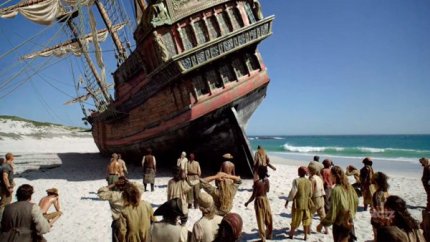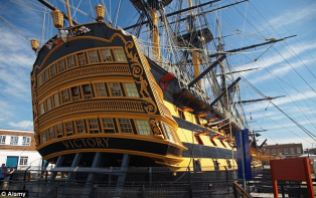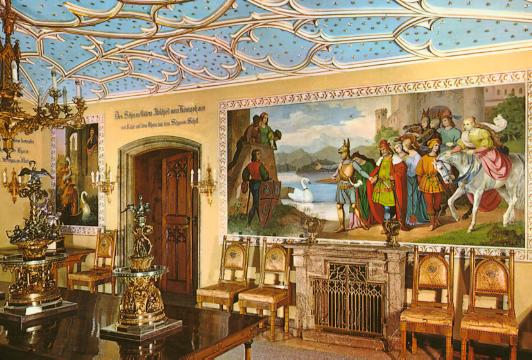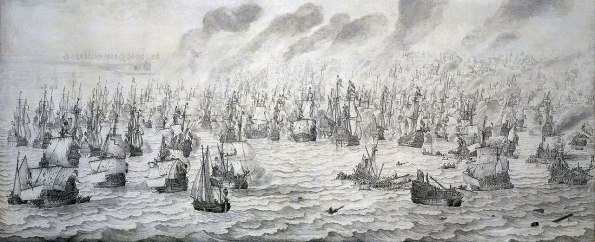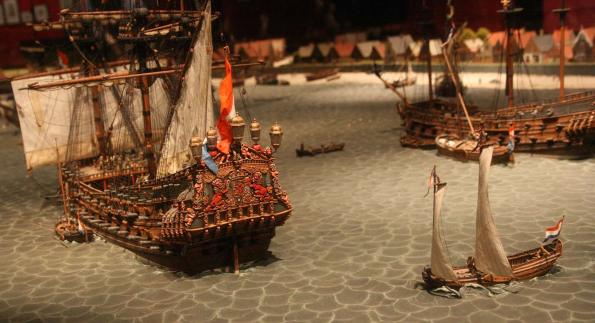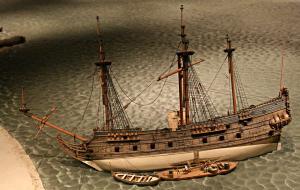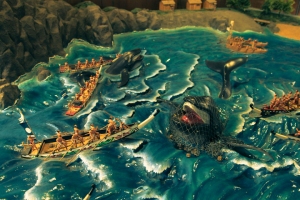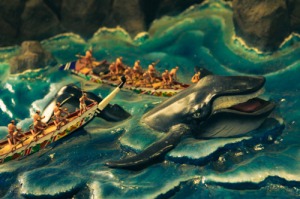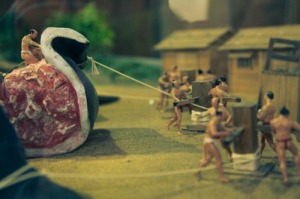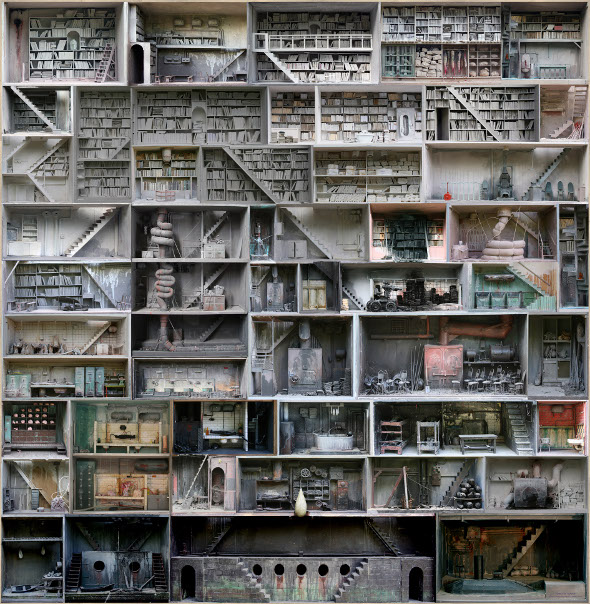Archive
The “golden age of piracy”
I guess most people watching Black Sails probably follow it for the boobs, blood and scowling. There’s plenty of each – Rackham’s charmingly incompetent, Silver’s charmingly hapless, Flint manages to get progressively less charming – slowly at first, then all at once. As character-driven drama it’s pretty much par for this “golden age of TV” – you can see that by turns it wants to be Game of Thrones or Boardwalk Empire but it’s just a bit too self-conscious about its basic trashiness.
But I’m sitting there thinking “I can’t take it any more, I need to know what year it is!” And so I finally look it up. And of course it’s 1715 – the obvious choice, to within 5 years either way. The moment we all know pirates from, due largely to Captain Charles Johnson’s popular trawl of the Newgate broadsheets* and, less directly but more fundamentally, to Henry Everie, Aurangzeb and the East India Company. You can read all about it in Robert Ritchie’s Captain Kidd and the War against the Pirates, which is very good at tying all the various kinds of extortion together.
It’s the time when most of our favourite characters come together (Blackbeard, Roberts, Low, England, Rackham and his titillating 3-way with Anne Bonney and Mary Read – and we know them all because of Johnson). It’s also the elegiac last gasp for “golden age” piracy, so we can place a reassuring capstone on it. Interesting times.
And I was vaguely disappointed because I was hoping somebody would’ve thought of setting things outside this critical decade – at some point when buccaneers were first abandoning their shoreline barbecues and getting up in Johnny Spaniard’s fries. Because goddammit Flint might want to copy Henry Avery and settle one big score, but his long game is pure Captain Morgan… or more exactly a royalist alternative American Revolution. And I was assisted in this misapprehension by Flint’s ship,
which could easily date from 1660, looking exactly like a warship of the Second Anglo-Dutch War:
(Flint’s Walrus, left, Isings’s war council before the 4 days’ battle, 1666, right.
BTW you can click on the pictures for full size. I finally figured out where wordpress hid that in their new interface).
And this misapprehension is actually quite lovely, because it is entirely plausible to have an elderly trader/warship kicking around the colonial service and getting swiped by some pirate – even 60 years later, as the show’s timeline demands, bravo!
But then it’s been refitted with a wheel instead of a whipstaff, and that’s frankly a bit too up-to-date in 1715. I’ll let it go – wheels are familiar to the audience and the steering gear of wheels even makes an important plot point… fine.
But. The Ranger.
I don’t want to say The Ranger is quite out of period… I’d have to do some more research, but she looks an awful lot like a second-half-of-the-18th-century English East Indiaman or warship. Look how flush that deck is, the low sterncastle, the rounded counter. If she’s not simply anachronistic she must’ve come off the stocks at Deptford 6 months ago and somehow wound up in Charles Vane’s possession. Maybe he posed as a Royal Navy post-captain and heisted her right out of the Medway. That’s a series I’d like to watch (albeit with a different actor for Vane).
What am I looking at? Well, flatness of the deck for one thing (we know that pirates often cut off all the fore and sterncastles to make a big fighting surface, but this is clearly a factory-done job). And restraint in ornamentation. And again, the Walrus is lovely:
Look at the carved woodwork on that transom – pure 17th century flair – and it even looks like someone’s nicked all the gold leaf off it, which is perfect. But the Ranger is just painted beading, like Nelson’s Victory (1765) or the Belvidera (1809):
…of course this is nit-picking, especially since all the ships are wildly over-sized for our pirate brethren, whose historical models preferred small, nimble sloops for which it’s easy to find spare parts.
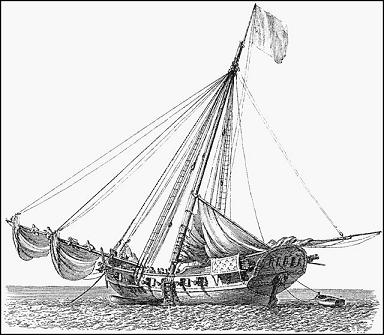
It’s funny to see businesswoman Eleanor Guthrie talking to the captains seriously about their running costs when they’re all sailing around in ships that strain colonial governments’ budgets – the squadron in Nassau bay could probably give the Royal Navy at Kingston a serious worrying.
Anyway as of episode 8 it’s a lot of tense, swashbuckling fun. Even if it’s weird that the pirates are so bad at sailing in moderately bad weather.
*Funnily enough in 1724, the year of Johnson’s publication, the biggest draw at Tyburn execution grounds was not a pirate but serial escape artist Jack Shepherd, who deserves his own place in your game.
Bonus links: Digital Domain did a bunch of the fx for Black Sails. The way they construct scenes is fascinating.
The inestimable Dirk Puehl retells Long Ben Every’s capture of the Ganj-i-Sawai here.
The Spanish Galleon that later becomes the Revenge is probably based on the Nuestra Senhora de la Concepcion y de las Animas (1690).
Cindy Villar‘s Pirates and Privateers pages are pretty great.
It is characteristic of the show that somebody makes a passing joke about a missing character that he’s probably gone to Port Royal to meet up with Avery – both are missing in 1715, Avery is presumed either to have disappeared into a respectable life god knows where or to have been killed by some murderhobo or to have been bilked out of his fortune by Devomnshire merchants (which would be typical of Devonshire merchants but there’s the problem of where the money would’ve gone from there). Port Royal sank into the sea like Sodom, Atlantis or Irem of the Pillars in the earthquake of 1692. And nobody comments or explains the joke.
DnD Tourism: the inevitable Neuschwanstein post
I don’t have much time these days, so I’m going to keep the analysis short here. Tl:dr – you should go visit Neuschwanstein, even if you don’t run a classically pseudo-medieval game, even if the whole volkish Wagnero-Tolkieny fantasy thing brings you out in hives, and especially if you think you’ve been inoculated against sentimentalism by a surfeit of Disney princesses. Because it’s all those things but it’s also so very good.
All the following photos are stolen off the internet: feel free to send takedown orders.
So you know the basic story already: Mad king Ludwig II of Bavaria decides ruling is too hard/boring and his real passion is building fairytale castles. He’s best mates with Wagner and he does his best to turn those turgid operas into fluffy stone confections until his mysterious death at the bottom of a lake supplies the obvious final tragic chord. 50 years later Walt Disney gets excited about the pointy turrets, digs up the last surviving artists who worked on them, and makes the first feature-length cartoon all about Fairycastleland, eventually leading to Cinderella’s Castle at Disneyland, CA, which sears Ludwig’s vision into the imagination of little girls for the rest of the 20th century and probably beyond.
So far so serviceable, if you want to mine the second most obvious source in all of fantasy. But this story spins off in several curious directions and the devil (and his salvation) is in the details. If you want to get conspiratorial, you could ask who murdered Ludwig and why, 16 years after Bavaria’s inclusion in Bismarck’s empire made his throne into a historical footnote. You could also wonder how it was that Ludwig’s brother and obvious successor Otto came to be “unfit for rule” after serving adequately in the Prussian army during the short and decisive Franco-Prussian War (or what he was doing in that army, for that matter). The official tour says Otto suffered from PTSD or something, and notes in passing that Ludwig, too, was mad. Except these days we think he probably wasn’t. Ludwig’s building fetish threatened to bankrupt the family, but when he died there was still enough money for his uncle Luitpold to keep up the residence at neighbouring Hohenschwangau and even to have novelties like a telephone and elevator put in.
Less famous, but cozier and handy for the shops.
Work stopped on the castle the day the king died, so only the 4th floor and above were finished. That was enough to make it into an attraction, however, and it was handed over to the new German state and opened to the public just 6 weeks after Ludwig drowned was bludgeoned to death following his arrest. Which is pretty quick moving, from a building site riddled with rebellious, gossiping servants to a state museum.
Then there’s the curious relationship between Ludwig’s creations and the 2nd and 3rd Reichs. In 1866, Prussia had expanded (via military threat, trickery and horse-trading) through most of the vaguely German-speaking territories that weren’t already nailed down in the Austrian Empire. When Ludwig acceded in 1868 Bavaria’s days were clearly numbered, as the largest independent state waiting to be seized by Prussia’s new, aggressive Kaiser from the sphere of influence of Austria, the “sick man of Europe.” Whether Bavaria was forced to join Prussia or ingeniously navigated an impossible situation depends on who you ask: legend has it that Ludwig sold his crown in 1870 in return for the royal treasure of Hannover. So Bismarck’s “tide of history” that swept Ludwig himself aside also made his castle-confections possible. As physical expressions of Wagner’s operas (and flotsam from the Second Reich), the castles were later grabbed up into Hitler’s “Mythology of the German Spirit,” but their frothy, light-hearted brand of mordlust didn’t fit squarely into the Chancellor’s drill routines: in 1937 they slipped out again from under the Nazi curse dressed up as Germanic Lore for American Kids, and hooked into the already vibrant American Castle Craze, incidentally helping Disney to fund anti-Nazi propaganda films (while Walt himself… had a more troubled relationship with the politics of oppression).
Right now, though, I’m most tempted to consider Ludwig’s ghost as one of the great secret architects of the 20th century: a progenitor who used film before it was even invented to propagate his memes around the world.
Walking around Neuschwanstein you can play spot the Disney movie and get a sense for just how direct the castle’s influence was on Walt’s greatest hits. And once you do, you start to wonder why Disney never made a Lohengrin or Tristan and Isolde. Take this painting in the Hall of the Singers, for instance:
Looking at his actual home at Hohenschwangau, it’s remarkable how the colour palette, motifs and composition of a bunch of 1840s German painters would inform 1940s American background artists and children’s book illustrators:
It’s even tempting (though facile) to see unmarried fantasist Ludwig as the prototype for all Walt’s lonely girls in a hilltop castle, waiting for their princes to come. But Snow White and Sleeping Beauty were just the first moves in ghost-Ludwig’s grand strategy to build Fairytale America (in Calyferne, no less), which may be the sneakiest bit of Capitalist appropriation ever: demythologizing mythology. Roaring like a mouse from beyond the grave. Convincing people that he’s safely dead, then re-emerging as… well, a patron saint of kayfabe – of theatre-as-life.
Because theatricality is all over Ludwig’s plans. Consider, for instance, his “throne room” (above, finished apart from the throne), which is really much less like a throne room than it is like a chapel, in which Ludwig himself would play the role of saint statue – on a pedestal under Christ Pantocrator and – most of all – in a narrative sequence of kings who were also saints.
(Valencia Cathedral, Spain, for comparison)
Or his tomb-like bed, crowned with wooden copies of a dozen mausoleum towers (modern toilet hidden behind the paneling). Or the bed he actually slept in, in Hohenschwangau, under a painted night sky in which the stars and moon could be lit up, by means of lamps hidden in a crawlspace above. Or if that’s not clear enough, the fact that in order to get from his bedroom to his reading room, he would have had to walk through a stage-set grotto, built for a performance of Parsifal:
Dracula not included.
Neuschwanstein’s primary architect, Christian Jank, was a theatre designer. His painted designs for the castle look like theatrical backdrops – and that’s what the castles themselves were supposed to be: physical intrusions into our reality of the world that Wagner brought to brief (although still bum-numbing), flickering life on the stage.
Which is why they’re so perfectly suited to being realized, all over again, as fantasies. Because like movie music or a well-written novel, they guide you in your reception. There is one classic exterior photo of Neuschwanstein that every tourist takes:
They take it from the Marienburg bridge, because it offers the one vantage point from which you can see the whole castle. Because the bridge was placed just so, as a viewing platform for the masterpiece; the optimal point for reproducing the castle’s image the way Jank wanted you to remember it. In most of the rooms there’s an obvious place you’re supposed to stand, where all the sightlines converge – and it’s not the king’s seat, but the point where the visitor first enters. The point where you would, naturally, have your Kodak moment. The walks up to the castles are through carefully manicured “wild” forests, complete with Alan Lee tangled roots and craggy shettiya-type rocks, which ground the whole thing and also prepare you for entering the self-consciously otherworldly castle precincts. In short, the whole thing is a masterclass in presenting an experience to the visitor. It only looks, superficially, like a castle. In fact it’s a thesis, a story-book, covered in painted illustrations and punctuated by spiral staircases and high lookout windows.
And it’s a much, much more interesting story than the overtly political ones, built at the same time, that were supposed to sell the new quality of German-ness to Ludwig’s Bavarian subjects.
…and in that spirit, it really doesn’t matter that it’s unfinished. Or that its younger brother, Castle Falkenstein, miscarried before it could get a foot onto the earth.
That just means Falkenstein’s ready to hold whatever story you want to pour into it.
BTW, if you are in fact planning to go see Ludwig’s castles in Bavaria, you really should also go to the Linderhof, where he actually lived much of the time, and the royal Residenz Palace in Munich.
Dutch ships in the 17th century: a diorama for CCH
One day soon (goaded by Michael Moscrip) I’ll post an actual thoughtful gaming article full of usable goodness, but from now until Christmas it’s gonna be lazy photoposting.
I’ve talked before at length about the diorama as an art form and a form of knowledge (and if you want more of that go read Steve Quinn‘s delightful book and hunt through the archives at fuckyeahdioramas). This here, though, is (a) pure pleasure; (b) a handy establishing shot of the Borg Invasion Fleet for Counter-colonial Heistcrawl –
the diorama of the Texel roadstead at the Jutters Museum, on Texel in the North Netherlands:
Texel is an island just off the coast of north Holland, strategically situated where the unfettered North Sea hits the sheltered and shallow “inner” or South Sea (Zuiderzee). The island has abundant water that stays drinkable for an unusually long time in barrels (due to some mineral inclusion I don’t really understand) and livestock. Through the period of the East India Companies the “roadstead” (shallow narrows between the island and the mainland) was the premier staging point for fleets leaving the Netherlands in all directions.
Ships would gather at Texel to wait for a favourable wind and tide to sweep them out into the North Sea and English Channel – sometimes for months at a time. They would be repaired and refitted and emptied of cargo and filled with fresh crew while at anchor in the Roads. If you wanted to gauge Netherlands sea power, your best bet was to hang out at Texel.
The diorama shows it “sometime late in the 17th century” – before the lustre had gone off the Golden Age. And I don’t know how many ships is has, but it’s a lot.
If you plan to play CCHeistcrawl and you really want to be alarmed about the navies that will grow up out of the first half of the 17th century, check out Willem van de Velde’s pictures of them arrayed against each other, fighting over ownership of the Atlantic:
The diorama shows merchant ships, whalers, fighting ships. Ships with battle damage from one of the Anglo-Dutch Wars:
Warships whose decorated spiegel sterns bespeak notable captains.
Little service vessels bustling around the great hulls like birds on a hippopotamus.
And everywhere contrasts: between the big ships and the little houses of the people that serve them:
between those houses and the cannon fort that defends the mouth of the Roads:
and between the costly business of war and the ruthless efficiency of Dutch trade:
that last image – the Baltic fluyt – is what the Dutch want to bring to the East Indies. Minimal crew, narrow deck, hull stretched out for cargo like an old shoe. That’s the ship that feeds the kitchens of Amsterdam with grain. Useless for fighting, optimally adapted for bulk extraction of resources. It only operate in places where you’ve already won the wars. In our own timeline it won’t be a practical instrument of colonialism until after the 1760s, and then it’ll be the English who wield that power, and they’ll adopt the faster Blackwall Frigate, and later the even faster clipper:
In the meantime (1600-1800, more or less) the Dutch will rely on their big East Indiamen, difficult to tell apart from warships:
(the East Indiaman is on the right), heavily armed and crewed – vehicles for soldiers, sailors (European, Chinese and Malay), guns and pepper. They’ll station old, leaky ones on port defense and shuttle routes around the Java Sea, and use them to provide an artillery backbone for the fleets of native canoes and caracoas that will fight all those obscure internecine wars between local princes that will slowly, but surely, grow their influence and colonies and arrogance.
But they won’t be easily dissuaded. See, the Indies trade will supercharge their economy – which they need because they’re already in massive growth of population and a war for independence with Spain. From 1600 t0 1665 Amsterdam, hub of the Indies trade, will grow sharply, from this:
to this (click to make much, much bigger):
It’s the realisation of a plan they come up with in 1610 – the year CCH begins – because right then they can see that they’re going to need a lot more city. For more and bigger houses, to accommodate their wealth. And although not all that growth can be credited to the East India trade (and it’s hard anyway to pick apart the influence of one trade among many in forming a commercial hub and economic powerhouse), some specific centres can be identified directly as indispensible parts of the machine:
Reward for getting this far: a bunch of fun dioramas from fuckyeahdioramas, including some delightful Japanese whaling ones especially for Arnold K:
Want some real history? Don’t value your eyesight too much? Have some ship plans
model of a 1938 liner cabin for all your death on the Nile needs. Click on the picture for pretty much the same size image here on the Dystopian Pokeverse or click on the text link right there in the previous sentence to go to the original database. Then you can click on the picture on the db page to get (sigh) the same size image again. BUT THEN you click “groter” under that image to get (sometimes, somewhat) higher res. I would do all that for you and publish the results, hexed up and cleaned up and high contrast, but I’m busy until at least February, sorry.
Here’s a section through a late 18th century warship of 64 guns for all your American revolution/French and Indian War type stowaway needs. And below, a nice, clear section, deck plan and cabin plan of an 1806 frigate for all your Napoleonic Dutch Aubrey/Maturan-manque needs.
And the same multi-view treatment for a French 24 gun corvette of 1832 for all your Belgian revolt/alt-history “rescue Marx from the time-travelers” needs.
All courtesy of the Rotterdam Maritime Museum, via their amazing treasure trove database of all things maritime, maritiemdigitaal. Which is totally searchable and useful if you play with it for a couple of weeks and also happen to speak Dutch. You might find it more searchable by doing a google image search on it though, using a search term like “ship model” and restricting your search to site:maritiemdigitaal.nl
The only trainspotting post I will ever write. Probably.
Looking at the trailer for the latest film in which Johnny Depp’s makeup upstages the titular character, I realise that what I really want to watch is a movie all about disruptive technologies. Or even just about the disruption caused by the train (sorry Johnny and whoever, I don’t care so much about your horse-on-horse action. That opening voiceover totally sold me that you were men of the past, packing six-shooters in an emergent age of machine guns).
It’s debatable how important the railroad was in “winning the West” (though it did supercharge historical change from the cowboys and indians horse-wars to the steel-driving men and mechanized warfare that ushered in the Interstate Highway system), but it’s really not debatable how important it was in Russia’s parallel annexation of Turkestan – rails rolled right over the Turkomans, Uighurs, Tatars and Kirghiz.
So of course, rival railway plans are big news in Tartary’s Tournament of Shadows (movie link!). And following Old Bloody Eyes‘ dictum that “to astonish is to triumph” (shock and awe, 1880 edition), style is just as important as substance. You want your trains to look strong, sleek, inevitable.*

For instance, the Bullet On Steel Shafts (photographs intercepted en route from Far Nihon) causes a lot more buzz around the Khanates’ walled gardens than the prosaic “high speed transportation link” that the Rumis are pushing (as if they could ever marshall the infrastructure).

Still, the project that’s getting most of the hype – that’s been praised by the Seers of Otrar themselves as “distressingly intimidating,” is the Azeri Koblobr:

Its bluff, flat front and nearly-blind pilot’s gallery suggest heavy armouring, possibly the presence of a ram,

but the feature that’s caused the most consternation is the long, narrow slit that runs right down the front of the machine, which appears to conceal some further purpose. Hints of Overworlder collusion in the train’s design has lead to a riot of speculation.
Needless to say, a dozen Khans and Viziers would pay handsomely for a copy of the plans…
* see, there’s a reason why the USSR put its railway museum in Tashkent, lynchpin and starting point of the Turk-sib railway, which allowed troops to be sent at speed anywhere in Russia’s conquered territories turned “friendly Soviet republics.”
Architects of Mars
If Lord of the Rings is secretly a book about landscape, ERB’s Barsoom stories are secretly about architecture.
I mean a couple of things by that. First there’s the obvious point that most of LoTR involves an extended walk in the woods, an epic journey that’s as much about finding your way through the thickets of Middle Earth, meeting its various people, getting bitten by mosquitoes in its marshes and rained on while crossing its moors as it is about any grand narrative. The battles and ring quest and all that mostly punctuate this core activity of the characters and the storyteller moving through wilderness. But more than that, the wilderness is in many ways the central character: it’s a mythically inhabited landscape – like the theological/philosophical idea^ of God’s country that reveals His face to you through His works, except in this case the faces revealed are those of the Norse-god Valar and Maiar, the elves, Sauron, Saruman – even Shelob who poisons her own little hidey-hole on the border of Mordor: these are personalities that own and shape the land, that alter its nature.
The Barsoom stories, in contrast, mostly play out in palaces, cities and temples** that turn out merely to be obvious markers in a planet-wide built environment, encompassing the network of canals, irrigation and atmosphere machines (sealed up in their own monstrous buildings).
And enormous, secret architectures of the ancients – the impenetrable rings of mountains protecting the Therns and Okar, the artificial underground dome and sea of the First Born; nested domains of hidden masters revealed in strict succession like an enfilade of state rooms.
There’s no hexcrawling Mars – it’s a man-made wilderness – a desert created and sustained by willed, sentient effort, and defined by destinations with emptiness between. The flat sea bottoms are for long mounted chases, exactly like the stern-chases of Horation Hornblower, the dry “seas” as featureless and mathematical as they must be to allow Carter to make his tough decisions about who escapes and who has to hold off the enemy, while the magnificent distances from pole to pole are routinely crossed at maximum speed by fliers, as Carter and his enemies each try to construct their own bright future and tear down the other’s.
More generally, Barsoom is intelligible, theatrical, designed to a purpose – which brings me to the point of this post for roleplaying. The predictable certainty with which Barsoom is laid out helps to keep the action where ERB wants it – fast-paced, sword wielding and cliff (or building) hanging, while Carter gets to be the chaos that disrupts the staid and known world of Barsoomian formal warfare.* Whether you like this or not depends on your feelings about hex/dungeoncrawling vs. plot-chasing as play methods. In any event, it offers some tools for running high-octane sword’n’planet adventure at high speed:
1. it’s all very definite – it helps to establish rules for the world. You know as soon as you encounter the sheer, perfect cliff that it’s impassable except for one trick passageway – and you know that one passage will be there, somewhere. You know when you fly into the city that its complexity needn’t concern unless you make it important – the villain will be squatting in the palace on the central square, under the spire, while your imprisoned friend will be at the bottom of the deepest pit.
2. it helps define the world as a theater built for heists. The palaces are stages on which courts enact their plays, and they all have both a scene and an obscene: there are always service corridors, ancient tunnels, secret passages or spaces behind curtains where you can see the action on stage but cannot be seen. This means not only that you can always collapse the enemy’s certainty and open up the chaos of tactical infinity on his regular schemes of guards, but also that all those people and places the tyrant relies on but chooses not to see are your potential allies. Just like you wouldn’t orienteer across the sea bottoms, so you wouldn’t (necessarily) try to map these endless anthills of power (unless that was the setup for your heist): instead you liberate some local from injustice and they lead you straight to where you ought to be.
3. which means the ubiquitous palace-megadungeons of Barsoom actually aren’t dungeons at all… unless you want them to be, in which case they’re as dungeony as anything you could ever hope to find. Every palace is ancient and has had many architects, so they always have some secrets to be explored and exploited – both by and against the PCs, and if you can read the traces of ancient intention you might unlock secrets even in well-trodden halls that open up a new (old) plot. This is like the good time of Ars Magica covenant design, exploring your wizarding school finding the old headmasters’ secret books and lurking doom right under your feet. Moreover, architecture is a map of the mind and building in the service of tyranny is always irrational; it generally supports containment and concealment, serving the tyrant’s paranoia and power-trips, so its lower layers tend to be psycho-theatrical trawls through vile torture chambers and worse pleasure pits, which inexplicably put the control rooms, from where you can murder the city’s entire populace, and the Well of Punishment, where the tyrant can watch his arch enemies starve to death, right next to each other.***
So do you want this kind of architectural world in your game or not? I’m kinda on the fence, myself. The old dnd mainstay of wilderness-with-points-of-architecture seems to offer the best possibilities of both worlds. But consider for a moment what an all-architectural world offers you – what I think is both its greatest strength and its greatest weakness:
architecture has meaning. Purpose. And that meaning can be revealed, understood. In some sense a work of architecture is a puzzle to be unraveled, rather than a blank space where you make your own dwelling and meaning. Which implies that your adventures in an architectural world, like Barsoom, would probably one day reach a natural end, when you know what the whole thing is for. As a Brit, coming from the land of truly interminable soap operas, I can see some value in that.
And the all-architectural world has no real outside, which is pretty much a thematic imperative in the Barsoom books – the Impenetrable Temple of the Sun, dread torture-prison of the god-queen Issus herself, like every bit of Barsoomian building everywhere, has a back door. The Tomb of Horrors, lost in its own wilderness, has a bottom, where its Ultimate Big Bad lurks, at his and its and often the PCs’ end. But in the all-architecture tombworld of horrors, that bottom chamber always leads somewhere else – always, ultimately, everywhere. So to defeat it either you have root it out (not just loot it but maybe rehabilitate it) or you have to break out of tombworld altogether… by which time you’ll probably have a good idea of what you want your sandbox domain endgame to be.
* which is kind of interesting when you consider they were written at the same time as ERB’s Tarzan stories – two naked protagonists, one king of the wild, the other prince of the realm of orderly war.
** the nomadic Tharks that John Carter first encounters (whom I’m convinced are based on Edward o’Donovan’s description of Turcomans) traipse from one ruined city to another, rather than following the more usual nomadic schedule of alternating pastures. They even take their name from one such city.
*** real example! From Warlord of Mars. No it makes no sense at all that JC can escape from the Pit of Plenty and jump straight into the Room With The Deadly Switches… except that this nasty little set of corridors is where the evil and cowardly emperor likes to spend most of his time, reassuring himself that the lever remains unpulled and his enemies remain abject.
^ Check out Heidegger’s “fourfold” of earth, sky, gods and mortals for more on this idea… and then come back and explain it to me.
Bonus for getting this far: imagedump of stuff that I didn’t know I wanted but now I do:
See that? That’s Percy Lowell’s actual “canals” drawing that caused all the fuss. WHY DID NOBODY TELL ME THAT “CANALS” IS A EUPHEMISM FOR GIANT STALKING SPIDERS!!???!?!? (from here)
Alas, a rather prosaic take on the wondrous temple of Issus, drawn by someone who’d recently been to the National Mall and wished it looked more like Chichen Itza. Sounds like me, actually.
I feel nothing but woe can come out of this unholy partnership of Duke Bluebeard and Chixi’lu the Loathsome – and I fear the production rather misses the whole point and power of Bartok’s vision, but there you go. I’ll still have my all-time-favourite works of psycho–theatre.
Motherlode of Barsoom art. Not sorted by quality, but feel the width. I’m rather charmed (though not convinced) by this Bond-era speedboat take on the Martian flyers:
there, all my obsessions in one image at last. I guess.
Property listings on Tartary
In response to Jason Kielbasa’s Constantcon Property Guide…
Offered by the Honourable and Trustworthy Al-Misri Brothers:
The Qaghan of Tashkurgan seeks a clean, responsible steward of good character to tend His caravanserai on the Kashgar road.

The buildings are in need of some repair (following the activities of Mongols) but the walls are basically sound and there is space sufficient to a small garrison, so that the site may serve also for an order of border monks or as a winter store for Cathay merchants. The steward must provide shelter and water for all respectable wayfarers, but may charge modestly for other services. Apply to the under-vizier, Hajji Usa ibn-Fars.
Room for one partner in a “tandoor-style” alchemist’s lab, underground, central Otrar. Lab contains flask-shaped kiln (ideal for glass or high-temperature metal experimentation), some living accommodation. Unbeatable location – smoke from kiln is concealed in chimney-forest of the Ilkhan’s palace.

Successful applicant will assist his partner in locating equipment/materials, keep lab tidy, and never use explosives or alcohol on property. Goodwill stipend of 4gp/month required. Apply by poste restante, c/o al-Misri Trading House and Emporium, Almaty.
Following the apprehension of the 26 Thieves of Kokand, their hide-out is now vacant and in need of reliable persons to prevent it from once again becoming a nest of vipers and a plague upon the people and commerce that fall under the hand of the Iron Council. Property consists of a complex of 4 caves situated in a box canyon beside the Andijan-Khujand Trunk Road: secret entrance responds to vocal command.

Any booty discovered within is the property of the Iron Council. 200 dinars of gold, half refundable after one year, when the new occupants have proved their metal.
One third interest sought in brassworks and scrapyard, Bayram Ali i Marw, following death of previous partner.

Scrap collected and repurposed from across the Turkmenabad basin: many unique items, opportunities for artificers working at any scale. Partner must be willing to contribute labor and materiel to annual shipbreaking and decontamination expedition.
Unfinished tomb in need of some restoration, necropolis of Bokhara. Excellent city views, cool breeze from north. Original crystal casket still available on demand. Offers from 90 dinars of gold. Apply to Koschqai Of The Citadel.
Well-appointed trading palace in Kashgar available for rent. In need of extensive maintenance due to long absence of proprietors, who left 22 years ago on an exploratory mission to Rum. 14 rooms, courtyard for showing wares and half-below-grade warehousing for at least 800 camel loads available. Usufruct of orchard included. Housekeeper and gardener speak Persian, Rumi and Greek. 70gp/month, payable to the Municipal Trust and Fortress of Kashgar. Some obligations expected.
Watchtower requires guardian, Urumchi-Ulaanbator corridor.

Would suit independent type, capable of dealing with mountain folk, repairing battlements after recent unrest. Ideal applicant will speak Mongol and Uighur.
Warehouse units in Shymkent: from one to one thousand camel-loads! No alcohol, qat or explosives, please. 5cp per camel, minimum charge: 1sp/month.
Underground monastery, recently abandoned in the Ihlara valley.

Total extent unknown. Some representational frescoes in upper galleries. Close to watercourses, game: hidden gardens provide pears, cherries, ducks. To be auctioned on the first of the new year, in 40 lots or to a single buyer, depending on interest. Apply to Housers-Royal of the Sultan of Malatya.
On the ship as megadungeon
 So now everyone’s on the science fantasy tip, I’m going Atlantean. Here, have some ghost ship encounters, underwater weapons and similar trouble.
So now everyone’s on the science fantasy tip, I’m going Atlantean. Here, have some ghost ship encounters, underwater weapons and similar trouble.
Edited to add: +Brendan Strejcek of Untimately kindly pointed me to this awesome other ship-as-megadungeon post. Metamorphosis Alpha on the Styx sounds like my kinda nightmare.
Microwave guns: requires two emitters carried by different characters: where you cross the beams, the water gets locally boiled (leading to battlefield “smoke” of a cascade of bubbles). Range: up to 100 yards, damage: 1d8 per round, doubling every round you fail to move.
Bubble gun: blasts air bubbles at the target, but these ones are sticky: if they attach they lift you up. If you can form a big bubble around your enemy’s gills you can suffocate them. Anyway they totally destroy battlefield visibility and sonar.
Concussion Grenades: does what it says on the tin. 4d6 damage over a 10′ radius sphere, 2d6 for the next 10′
Depth charge: or shallow charge, for the benthically inclined
Phosphor flares: cause burns, blindness (or light up the depths, depending on your orientation)
Ghost ships: a survey of sources (in French)
giant ships (big as kingdoms) such as La Grande Chasse Foudre, from 1917
Another French survey, including derelicts.
naive map from a round the horn oceancrawl
Charlatan has of course been on this kick for a while. He got me to say this:
Encounters: what about the classic siren call and/or illusory voluptuous form concealing the dead thing below?
Or the illusory ship, that lures greedy characters into the deep (but maybe only after they take something off it, echoing those stories of mutineers who loaded their pockets so with stolen gold that when they made to swim away they sank instead)?
What about the ship that sails right up over land to exact its revenge, like in the legend of Cruel Copinger, carried off from his bedroom ashore by a revenant flying ship?
Fire ships that conceal their flames below decks or which burn down from the mast-tops in mockery of earthly gravity (and St. Elmo’s fire, either a ward against undead or in the hands of the damned as a weapon).
Or ships that constantly re-enact their wrecking – in which case the hazard is immediate if you’re on board, or may come from an unexpected angle if you’re still on your own vessel, and the ghost ship drives you onto the rocks.
Monsters: Davy Jones’ shellfish crew was one of the things I liked most about the PotC films. In a similar spirit, how about:
– multiple-amputee undead like the man-of-wounds but adapted to the perils of the sea – with hooks and peglegs and whales’ teeth and sharkbites?
– poltergeists armed with a chandlery of shipboard stuff – handspikes and blocks and strangling ropes and sail-darning needles and boathooks and flensing spades and, worst of all, anchors? The poltergeist could operate in creepy-everywhere mode or could cobble together a walking, wheezing form out of on-deck junk to wave the characters off.
And finally, I promised you a ship as megadungeon. Apart from the decidedly Miyazakiesque Grande Chasse Foudre (great lightning chaser, that is), what about:
The hollow iceberg: up top it’s just a hollow in the floating ice that keeps going down. Below it’s an ice-crab warren of passages, all transparent and refracting like a hall of mirrors, that keeps getting darker as you descend. Your torches, alas, will get extinguished by meltwater if you don’t keep moving them.

The Marie Celeste as dungeon – first there’s sheer scale: the giant deserted ship represents a massive treasure, but only if you can bring it to shore. But what about the wood-bound world of the ship that reveals a mythic underworld below decks? Mysteriously much larger than it should be, leading into a stinking orlop dungeon, with gardens of valuable plants and arks of animals and everything else you find in bottled worlds – including collectors.
Sometimes the cargo is not just the treasure, it’s also the monster – the most famous example I guess is Alien, but ships often carry dangerous goods that shore kingdoms won’t tolerate (plagues and vermin and other causes for quarantine, to say nothing of political prisoners, weapons or pharmaceuticals). So your adventurers break into a barrel and they see this strange hairy blue fruit inside, and they don’t realise until too late that it requires sunlight to activate it, and before you know it the deck’s awash with these:
You know how ripening bananas release a hormone that ripens all the other bananas (and everything else) nearby – an exothermic process that leads sometimes to ripening room fires? In 6 hours the smell and heat become overpowering – sweet, alcoholic, headachy. In 12 hours you have a temporary army – they run amok, then fall down after 2 days and seed themselves in the ground…
But it’s maybe best simply to multiply the number of decks below the waterline, for a slow-release cumulative horror realisation that the players are getting in too deep – every level is just as claustrophobic as the last (say, 150′ long by 36′ wide), but they get progressively stranger as you keep going down.
It could go all psychological like Bluebeard’s castle* (after all, if the house is a map of the mind, the ship is, as Foucault said, both a womb and a psychopomp for going beyond the horizon), with rooms of bizarre purpose. Bartok’s version starts simply with a torture room and armory, but goes on to reveal a “sea of tears” and chambers of mysteries too terrible to be sung about.
Or it could simply be unreliable – the bottom planks so rotten that when you step on them they break and let the sea in, the ladders twisted and rat gnawed, so you risk falling down them, the spars and rigging just waiting to fall on your head, every cask and box in the cargo hold a trapped chest containing god knows what.
* the Blackbeard/Bluebeard clash suggests a Battle of the Beards that I find irresistible: legendary devil pirate vs. psychological suppressed violence auto-horror – FIGHT!
real lost continents are the best lost continents: Carcosa wacky races and asylum notes for the Sea of O’sr
FIRST, the reason I’ve been silent for a while is I’ve been noodling about writing a little Carcosa/Toxic Tartary Wacky Races game for (among other things) Flailsnails on Google+. The bare outline:
– you can bring whatever lunacy you’ve invented because flailsnails, but at minimum the home setting will have Carcosan dinosaur riders, Mad Max desert buggies, Tharks on Thoats and carnival floats. Racers have to balance the competing demands of zooming across an electroradiant hellscape (thanks Jeff!) with sabotaging each other and roping the local mongrelmen into their diabolical dirty tricks – and the more they divide their attention, the more likely it is all to go horribly wrong;
– the race will be over in 6-8 turns and the prize will be Grand Yet Mystifying;
– your character may die, mutate, get incorporated in the landscape and or reified/deified along the way. Think you can survive a John Boorman bad trip?
I hope to get it up and running in 2 weeks. We’ll see.
Toxic Tartary is Carcosa through a post-Soviet Central Asian radioactive Arabian Nights filter. For a fantasy filter placed over that, see HF Calder’s handy guide to Sky Piracy Around The Dune Sea – of course all of this is happening somewhere in Toxic Tartary, but with the time-spine ripped out of the historical narrative so that everything is always happening at once – pyramids rising, pirates despised/resurgent, gods rising/falling, nobody really knowing what’s going on. Just like real life.
SECOND: “Siberia shmiberia,” you say, “show me the really cold and unfriendly places!” Blood of Prokopius’ Alaskan nightmare looks to me like equal parts militantly anticolonial Cthulhiana (paging jason kielbasa!) and His Dark Materials arctic horror-mining, and that sounds pretty neat, but I want to go south for my Sea of O’sr adventure path…
On the allure of remote islands in the shadow of Antarctica.
Lost taught me everything I need to know about the value to be found in a single 5 mile hex and the special kind of claustrophobia you can get from knowing the world is out there but it’s beyond reach. So you’ve found a chart that shows a lost continent of wonders down in the deep south ocean and you’ve braved the Appalling Sea Gyres and hundred foot waves to get there – what do you find?
First of all, that most of your lost continent is under water:
Zealandia, larger than Greenland or India, and almost half the size of Australia… is unusually slender.*
Kerguelen Plateau is an underwater volcanic large igneous province (LIP)** in the southern Indian Ocean. It lies about 3,000 km to the southwest of Australia and is nearly three times the size of Japan. I note, not quite in passing: It is thought that Thule and Cook**** may have been a larger single island in the past, and there is evidence for a submerged crater between the two… Volcanic heat keeps the crater on Thule Island free from ice. Just like Arthur Gordon Pym told us...
I am never resorting to Mu or Lemuria again, these are much cooler – and could be seaweed jungle exotica if they somehow breached into view. Look at this handy Antarctic azymuthal: if we add Rlyeh we get 3 points of… well, actually not a pentagram but a square. Which in some sense is much creepier and more suggestive: Wells gave his Martians tripods because nothing in Earth biology (that he knew of) has 3 legs, and it’s since become a cliche that odd numbers mean alien. But the square, or quincunx (drawing Antarctica’s Mountains of Madness*** into the loop) implicates human involvement about as clearly as it’s possible to do. Giving us a fourth (or fifth) point over the South Sandwich islands near South Georgia.
And suddenly the Falklands War snaps into focus – Argentina, favourite hidey-hole of Hitler-breeding programs, vs. Britain, Evil Emperor of the previous century, fighting over those desolate bits of rock where the colour out of space touches down or, more likely, where it threatens to erupt into the sky. Because check out Gough Island, where you wash up while escaping the Cyclopean basalt towers shooting up on Montagu island, and trying to get back to St. Helena. Sure, when you first crawl ashore it looks a disappointing shade of grey-brown. Until The Colour descends.***** Full set. Stars. This is a campaign frame of seabed-churning horror. The navels of the world – the anchor points of reality – the IKEA allen-key holes into the hollow earth – are found on four islands around the south pole. Tampering with any one of them threatens to break the globe right open and spill the worms out. Alas, I’m not up on my Antarctic Space Nazis, and perhaps all of this is old news to ![]() princeofcairo, but given the mindshare New Zealand has claimed since the LoTR movies, I’m starting to think Lawsian thoughts about the effervescent power of collective representations. In my Cthulhu-reversed game, where the PCs were a bunch of monsters ditched in the Bermuda Triangle with a faulty saucer and an Antarctic projection map, all the real action happened underwater. But in this game the point might be not to raise the lost continent but to submerge the ones still left stranded above the protecting waves (fighting against the ancient Atlantean defenses, such as spring-loaded urban floodproofing! Your players will hate it when the Sorcerers of Continent Evil pop their megacity up out of the sea like a turkey thermometer) – to deactivate the transmitter that calls the Mi-go miners back or to keep the crazy nationalist powers of the world from accidentally raising R’lyeh in their ever-more desperate searches for rare earths and fossil fuels.
princeofcairo, but given the mindshare New Zealand has claimed since the LoTR movies, I’m starting to think Lawsian thoughts about the effervescent power of collective representations. In my Cthulhu-reversed game, where the PCs were a bunch of monsters ditched in the Bermuda Triangle with a faulty saucer and an Antarctic projection map, all the real action happened underwater. But in this game the point might be not to raise the lost continent but to submerge the ones still left stranded above the protecting waves (fighting against the ancient Atlantean defenses, such as spring-loaded urban floodproofing! Your players will hate it when the Sorcerers of Continent Evil pop their megacity up out of the sea like a turkey thermometer) – to deactivate the transmitter that calls the Mi-go miners back or to keep the crazy nationalist powers of the world from accidentally raising R’lyeh in their ever-more desperate searches for rare earths and fossil fuels.
Suddenly I have an end-game for my still yet to develop Sea of O’sr campaign. Wakwak and Zabag.
Perhaps you’re worried that sinking four lost continents won’t be enough of a climax? Here, have 10 vile vortices (because who’s supposed to make do with just one Bermuda triangle?). Does looking at that map make you think that if you kept adding regularly-spaced triangles you could turn the earth into something like a D20? Well actually it’d be a D17… the number of Pokemon types.
* wtf? Unusually slender?
** srsly, wtf? I love the use of the word “province” here. Far from the even larger igneous metropole (ELIM), perhaps. Metamorphic provinces are of course the diasporogenic engines of the World System.
*** not the Cliffs of Insanity, with which my son is currently obsessed. Oh you knew it would happen.
**** is that why they ate him and took his thighbones up on the mountain? Because he’d namesaked them to this toxic-god-unforsaken necklace of rocks? What did they see, from faraway Big Island?
+ OK, a rough square. Which makes me wonder (although not enough to waste time on it), if one can’t draw a lovely Fibonacci spiral linking together all those place – Ponape, Easter Island, Hy-Brazil, Oak Island etc etc, that stubbornly refuse to conform to great circle ley lines, so that they show up on neatly spaced lines like eclipse paths. And take advantage of the fact that the alignments are never quite right.
*****Via bldgblog, again. Also the wonderfully-named Friends of the Pleistocene (nothing to do with Julian May, I think).
AD&D modules. Also: Wargamer Heaven in Paris
First, this is a mighty handy resource: a list of not a few OSR AD&D (1e) modules you can get for free or close to it. Imagine you picked up the reprints of the original AD&D rulebooks that WoTC will be distributing in April, and you say to yourself, “well, what do I do with this crazy game?” Here. Also entries and winners of the One Page Dungeon Contest, here.
Second, this is pretty much wargamer heaven. It’s a huge, gorgeous show of “relief maps,” on at the Grand Palais in Paris right now (nicely made website).
Relief maps sound pretty boring, until you realise that they’re those models of cities under siege that Louis XIV, Napoleon, Peter the Great etc. were always striding around on, moving their troops about, like this. Photos on the official site aren’t great – these are better and more navigable – but the site does have a bunch of 3D digitizations of excerpts from the models, made in partnership with Google Earth, and navigable by google map.
The relief maps are interesting for a bunch of reasons – first, they’re documents of the state of cities and their surroundings at the time the models were made – and some of them date back to the 16th century. There are very, very few records of urban fabric out there for periods before the 19th century, so that makes them important historically. Second, they show how good military surveying was at different periods, and how carefully French kings prepared for war, building models of their own cities against the day they would have to defend or retake them, documenting farmhouses and watercourses and walls between fields, all relevant for hiding the movement of troops or placing guns to cover battlefields – making them relevant to recent discussions of war and its rat-bastard, planning-related attractions. They’re also just plain incredible – obsessively detailed, beautifully finished, intricately jointed together.
Finally, they show ideas of good and bad fortification, and what rulers were willing to do in the name of defensibility – there’s a great story about how Louis XIV’s chief military engineer, Vauban, was flabbergasted by how bad the defenses of Embrun were. He threw his hands up and said he could do nothing with them. So Louis gave him permission to build a new fortified town, closer to the enemy (Savoy in this case), wherever he thought made the best military sense. The result was Mont-Dauphin – an exemplary cannon fort, straddling the river, with superb sight-lines and command of the territory and all that. Sadly, though, while Vauban was a military genius, he was no urban planner. Mont-Dauphin made no sense as a town, nobody wanted to go there, and 30 years later they still hadn’t got around to putting up the modest set of buildings inside those exemplary walls which Vauban had placed in his model.
So what use is all this to the harassed DM? Well, models and sympathetic magic are old dungeons standbys, but as a form of non-magical scrying these also suggest all kinds of espionage plots to me – agents could break into the model library and steal or mess with the contents, feeding the enemy false information with forged model components – or they could mess with the landscape itself if there are means to do so, screwing up the advance of the Great Automata Legion by deviating the river right into their obvious attack path or blocking off that all-important street that’s perfect for cannonfire or cavalry charges. Or they could discover plans there – for ready-made forts or flying islands, even, which would make or break a strategic advance. Does Ming the Merciless reduce his subjects to miniature scale – as punishment or to collect trophies of great conquests? Could you steal such a miniaturized town and restore it to full size – on its original location or somewhere more or less convenient? In Jonathan Strange and Mr. Norrell, Strange moves chunks of the Spanish countryside around to baffle the enemy and screw up their logistics – maybe the model-map room allows a similar power, letting the Supreme Overlord lego his domains together in whatever configuration suits his schemes of the hour.
Unrelated oldie but goodie: how to get to Ninan M’nath. Love it.





